- Details
- Written by Gordon Prentice
Tomorrow (18 October 2016) Councillors will consider an application for an Official Plan and Zoning By-law Amendment to allow a four storey, 82 unit apartment building at 751 and 757 Gorham Street, Newmarket. (Scroll to agenda item 8 and open.)
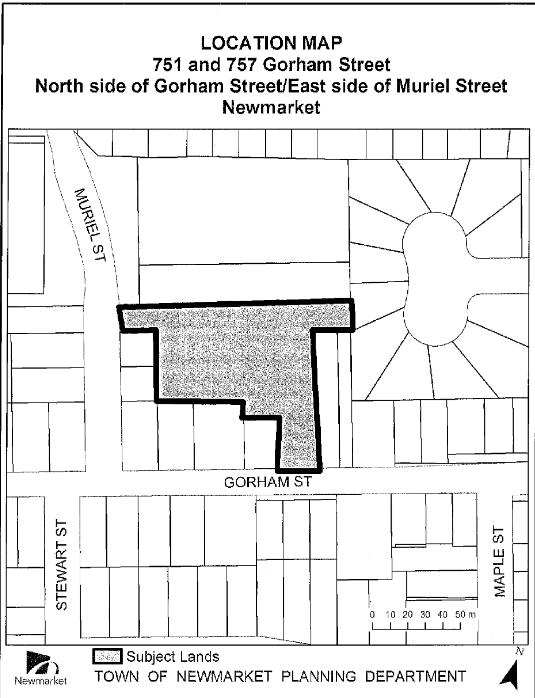
The planning consultant for the developer (2439107 Ontario Inc) is none other than Howard Friedman who chairs the Town’s Development Co-ordination Committee whose members include senior Town staff from planning, engineering and legal services. Friedman has been doing this job for the Town since 1998 and recently had his contract with the Town renewed for another three years.
In February this year, the Town’s Planning Director, Rick Nethery, told councillors that if there was a conflict of interest Mr Friedman declares it, asks a staff member to take the chair and leaves.
Nethery went on to say:
“HBR (Howard Friedman’s firm) has managed to ensure a balance between the Town’s best interests being protected while respecting the challenges that face developers.” (My underlining)
I have no reason not to believe that Friedman properly declared an interest in the Gorham Street development.
Here in Newmarket, the fox is never put in charge of the hen house.
But it does make me wonder how it is possible to reconcile the Town’s existing policies with what the developer is proposing. The answer, of course, is to have a planning regime which is infinitely flexible – one that bends over backwards to respect and accommodate the challenges facing developers.
"Stable Residential" means no apartments
The report tells us the developer’s lands are designated Stable Residential where
“permitted built forms include single and semi-detached dwellings, but would preclude apartment uses. The applicant is applying to amend/replace the existing designation on the subject lands to Stable Residential with special provisions to permit the proposed four storey apartment.” (My underlining)
We are told a key principle in the Town’s Official Plan:
“is the commitment to protect and strengthen existing neighbourhoods. The Official Plan expects that redevelopment in stable residential areas respect the existing character of the area.”
That seems pretty clear to me. But hang on…
Stable Residential can mean apartments
Although staff have concerns about the building massing, site layout and landscaping
“in principle a low-rise apartment building is not incompatible with adjacent single-detached residential neighbours. The Town's practice has historically been that new development adjacent to existing development should be of a similar built form, notwithstanding that throughout Newmarket and in new development there are adjacent different residential built forms.”
It appears conflict can be resolved by deploying “sound planning principles” to ensure the impact of any new development is minimized.
Sounds like a load of old baloney to me.
Why not stick with the existing Official Plan and the Zoning By-law?
Defending the Official Plan
Back in the old days after the Glenway debacle, our Mayor, Tony Van Bynen, used to talk about “defending the Official Plan”.
These days that’s for the birds. We all know Van Bynen is the developers’ best friend.
As it happens, Van Bynen was at the Open House on the Gorham Street development on 14 September 2016 and my spies tell me he was going on yet again about intensification and how it is mandated by the Province, no doubt giving people the impression the Town’s hands are tied.
Then I am told he went off on a tangent talking about broadband and driverless cars. He was telling anyone who would listen that in the future no-one would own cars any more. You would just dial a car and one would show up. And we wouldn’t need parking lots either.
Tell that to the developer who wants 103 parking spaces.
Better still, ask Howard Friedman what he thinks.
This email address is being protected from spambots. You need JavaScript enabled to view it.
- Details
- Written by Gordon Prentice
It takes a certain resilience to run for office. Perhaps even more so second time around.
Ron Eibel got 61 votes when he stood for election in Ward 5 in 2014. I ask him how many votes this time? 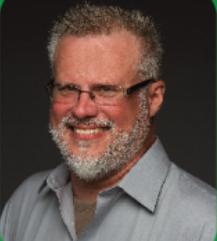
He bursts out laughing. 62!
But Ron is joking. He is in it to win although, I fear, he has a mountain to climb.
He admits Bob Kwapis has more lawn signs up than all the other candidates put together.
We talk about social media and I suggest its reach is exaggerated. More conventional campaigning is still important.
I ask if he has knocked on every door in Ward 5. (A claim made by Darryl Wolk and Bob Kwapis.) No he says with disarming candour.
That’s probably because he spends enormous amounts of time chatting with people on the doorstep. Half an hour doesn’t seem unusual. Ron likes to talk.
Ron’s website tells me his Mom’s side of the family is German and, as a boy, he spent many summers with his grandparents in Munich. Pedestrian only streets and squares were commonplace and he yearns for the same kind of traffic-free ambiance in downtown Newmarket.
The anti-politician
Ron’s big selling point is that he is the anti-politician. He is not going to make promises he can’t keep or on areas of policy – such as education – which lie outside the realm of responsibilities of a Ward councillor. I tell him this could be quite limiting. Expressing a view on Metrolinx policies for Regional Express Rail, for example, could help people understand where he is coming from.
He tells me with jaw-dropping frankness that GO Rail “is Darryl’s issue”.
I learn that Darryl Wolk has been going on about this since 2014 and Ron gives me the impression he doesn’t want to trespass on “Darryl’s issue”. What saintliness! Politicians borrow and steal good policies from others all the time providing they resonate with voters. But not Ron. He will say things that, to my delicate ears, shock and stun.
People who want to get elected are not supposed to say they have never been on a bus in Newmarket. But Ron happily confesses. If he wants to go someplace nearby he will walk. If it is further he will jump in his truck.
But at some point this won’t be an option. What happens when there are another 32,000 people living in Town?
Empty buses
He talks about the $4 fare which is way too high for short trips in Town. I agree. And, inevitably, he mentions the empty buses. I wearily tell him everyone talks about empty buses, including the Chair of York Region, Wayne Emmerson.
I heard Emmerson tell the Committee of the Whole on 8 September it would be cheaper for the Region to pay a taxi to pick someone up every other day than run an empty bus every day. (The media doesn’t cover York Region as it should so remarks like that one disappear into the ether.)
Authenticity
Authenticity is Ron’s big thing. He doesn’t pretend to be someone he is not. He prides himself in not being the smooth polished operator – although he can don the suit when he has to. As a man of the people, he tells it as it is.
He says that of all the candidates at the by-election Q&A at Newmarket Theatre he was the only one not to have notes in front of him. He says they would be distracting. And, I guess, he doesn’t want to appear rehearsed.
I sense he believes other candidates are guilty of burnishing their credentials.
Clock Tower and the 3 storey height cap
We are now talking about the Clock Tower which is the key issue facing voters in this by-election. He is one of three candidates who have stated unequivocally that the 3 storey height cap must be respected. (The others are Tracee Chambers and Darryl Wolk). 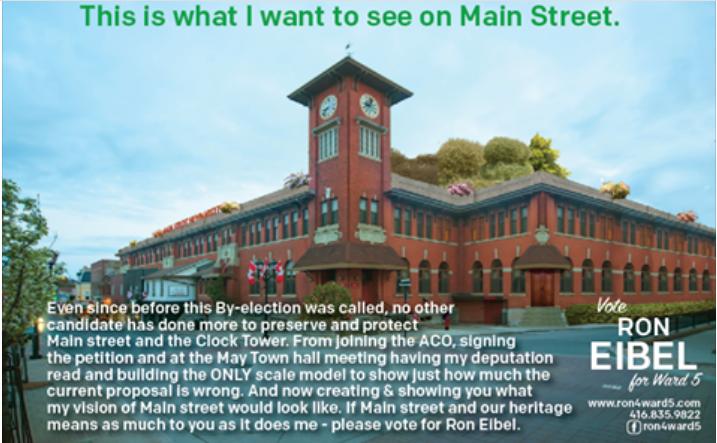
He won great plaudits for the scale model he built for the Statutory Public Meeting on 9 May 2016 which showed the overbearing mass and scale of Bob Forrest’s development, looming over the old Main Street. I tell him his latest rendition of what people want for the Clock Tower may come across as slightly eccentric.
He laughs the criticism off, explaining how it would all work – right down to the rooftop terraces.
Ron is now talking enthusiastically about Main Street and its terrific shops. He wants to make it even better.
That’s the kind of thing politicians say.
This email address is being protected from spambots. You need JavaScript enabled to view it.
- Details
- Written by Gordon Prentice
Construction of York Region’s new “Administrative Centre Annex” at the intersection of Yonge and Eagle in Newmarket will start early next year and take 36 months, completing in early 2020 according to a report going the the Region’s Committee of the Whole tomorrow (13 October). The Annex will cost $172, 084, 354. 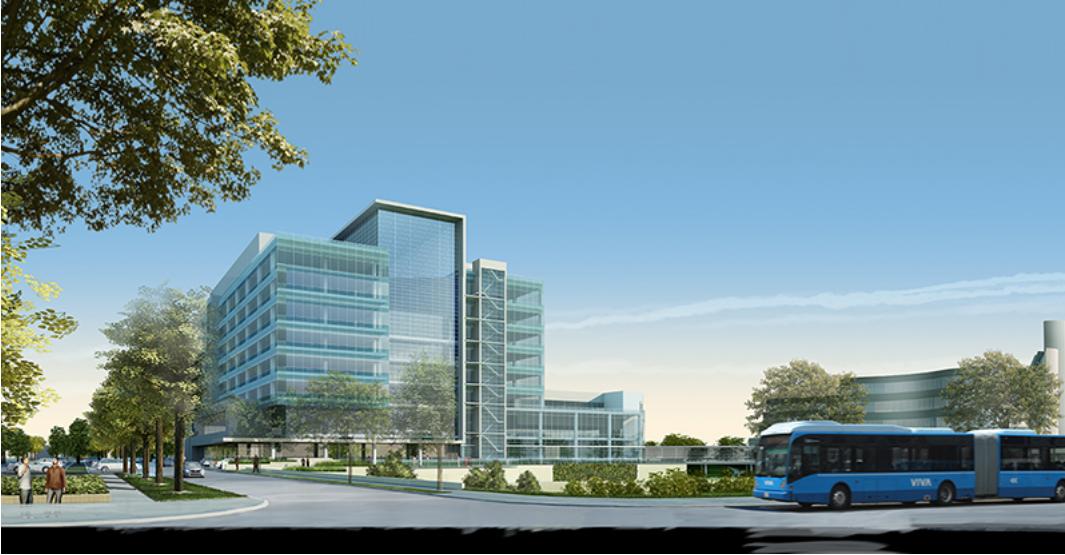
The report says:
“The construction of the Annex will realize York Region’s long term plan to consolidate a variety of community, health and courts services into one central, fully accessible modern facility.”
We are told a Public Information Session is planned for next month which will provide updates on construction activities in the Yonge Street/Eagle Street area.
“This will include the Annex, the Rapid transit along Yonge Street and other adjacent development.”
The report says the Region’s website will be updated continuously with project and progress information.
The Annex has been in gestation for over a decade and it is good to see things are at last moving on a development which will bring people and jobs into the so-called “urban centre”.
That said, construction of the Annex will inevitably bring yet more inconvenience and hassle for the besieged residents of Glenway who are already living with the redevelopment of the former golf course lands.
Some fear the new parking lots will have lights on around the clock and that traffic will become insufferable.
Others, who are not necessarily opposed to the Annex, scratch their heads about the location. They tell me building on a flood plain is “beyond stupid”.
This email address is being protected from spambots. You need JavaScript enabled to view it.
- Details
- Written by Gordon Prentice
I have been following the municipal career of Mayor Tony Van Bynen long enough to know he talks the talk but doesn’t always walk the walk. 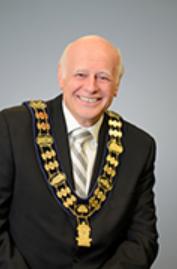
The secretive retired banker says he wants to reform the OMB but what has he actually done to advance the cause? With the Province’s review of the OMB underway, now is the time to find out.
After spending $588,291 going to the OMB “to fight for Glenway” – and failing - he vowed he would work with others to bring real change to the municipal planning process.
Before the 2014 municipal election Van Bynen promised voters he would be:
“Bringing real change to the Ontario Municipal Board and the planning process.”
He pledged:
"Bringing reform to the Ontario Municipal Board and the Planning Act to ensure our residents have a say in shaping their community will be a priority in the next term. Our Council’s decision to fight for Glenway and defend our Town’s official plan was the right thing to do. I will be working with the Association of Municipalities of Ontario and a number of mayors to meet with the Province to bring about real change to the municipal planning process.” (see note 2 below)
Promising the earth, delivering dust
So has Van Bynen delivered on his promise to voters?
I formally asked the Town if the Mayor had requested a meeting with the Province to discuss OMB reform at any time since the last election in 2014. I also asked for sight of any correspondence from Van Bynen to the Association of Municipalities of Ontario or to any of the Mayors of its 444 member municipalities on OMB reform from between October 28, 2014 to September 8, 2016. Town staff reported:
“We have conducted a search of our records and have not found any records that specifically indicate that Mayor Van Bynen has requested a meeting with the Province regarding OMB Reform or correspondence sent to AMO or its members on this topic.”
Maybe it was all done by word of mouth.
Maybe there is a mountain of evidence somewhere showing he has been closely engaged in the issue for years but I haven’t found it yet.
Maybe I am doing Tony Van Bynen a terrible disservice and he has been a prime mover, diligently working behind the scenes to advance his OMB Reform agenda
“to give residents a say in shaping their community”.
There has been at least one meeting, maybe more, with Chris Ballard. I don’t know who asked for it yet. But if it was Van Bynen – and we shall find out soon enough - it would be wildly out of character.
In fact, Van Bynen ceded leadership on OMB reform to Aurora whose energetic councillor, Tom Mrakas, organized a municipal summit on the issue earlier this year. Mrakas’ initiative was enthusiastically supported by Ward 7’s Christina Bisanz, a Glenway resident herself.
Van Bynen and the Clock Tower
As is the way of the man, Van Bynen kept what he learned from the Glenway debacle to himself except for this gem that slipped out when he was talking about the Clock Tower development:
“We’ve learned through Glenway that polarity doesn’t help anybody.”
Translated, this means Van Bynen doesn’t like saying no to developers even if it means ripping up the Town’s Heritage Conservation District policy.
“I’m optimistic we can make the Clock Tower work; there may need to be some fine tuning on how we get there.”
Van Bynen, intensification junkie that he is, desperately wants to help Bob Forrest get the go-ahead for his seven storey condo.
But if the Council, led by the Mayor, votes in favour of Forrest’s planning application the decision will be appealed to the OMB by the Newmarket Branch of the Architectural Conservancy of Ontario and other concerned residents.
As Van Bynen might have said, but didn’t…
Defending the Town’s Heritage Conservation District policy is the right thing to do.
This email address is being protected from spambots. You need JavaScript enabled to view it.
(Note 1) Disclosed following a request under the Municipal Freedom of Information and Protection of Privacy Act for access to:
“A record indicating if at any time since October 28, 2014 the Mayor has requested a meeting with the Province to discuss OMB reform and, if so, to provide dates and details. Correspondence from the Mayor to the Association of Municipalities of Ontario or to the Mayors of its member municipalities on OMB reform from October 28, 2014 to September 8, 2016.”
On 22 January 2015, Van Bynen passed on to Chris Ballard various reports that had been prepared by the Town and York Region on OMB reform. This was a follow-up to a meeting between Chris Ballard and Tony Van Bynen and the Town’s Chief Administrative Officer Bob Shelton.
On 28 August 2015, Van Bynen passes on to Chris Ballard a letter from the AMO.
On 14 July 2016, the Mayor’s assistant, Pat Noble, on behalf of the Mayor, passes on to Council colleagues a letter from the Minister on the OMB Review.
In all, there are six records. Details of three other records (listed below) cannot be disclosed until the third parties mentioned give their consent. “These third parties have until 27 October 2016 to provide comment regarding the release of the records.”
There are two emails from Chris Ballard MPP to the Mayor, dated 5 March and 28 August 2015. The former concerns “planning reforms” and the latter is an “update on Bill 73”.
On 28 August 2016, the Mayor received an email from the Ministry of Municipal Affairs and Housing on the subject: “March GTHA Summit Summary Notes”. (Greater Toronto and Hamilton Area Mayors’ and Chairs’ Summit)
You can read the documentation here.
(Note 2) Newmarket’s Director of Planning, the ineffectual Rick Nethery, subsequently contradicted Van Bynen by saying the Town did not go to the OMB to “defend the Town’s Official Plan”.
Update on 12 October 2016: I asked the Town who organised the meeting referred to above. I am told
"it was one of the quarterly meetings with Chris Ballard organised and initiated by the Mayor's Office".
The email continued:
"The Mayor and CAO often attend these meetings together to discuss various matters."
- Details
- Written by Gordon Prentice
A Town Hall on OMB reform will be held at Trinity United Church, 461 Park Avenue, Newmarket from 6pm – 9.30pm on Tuesday 18 October 2016. 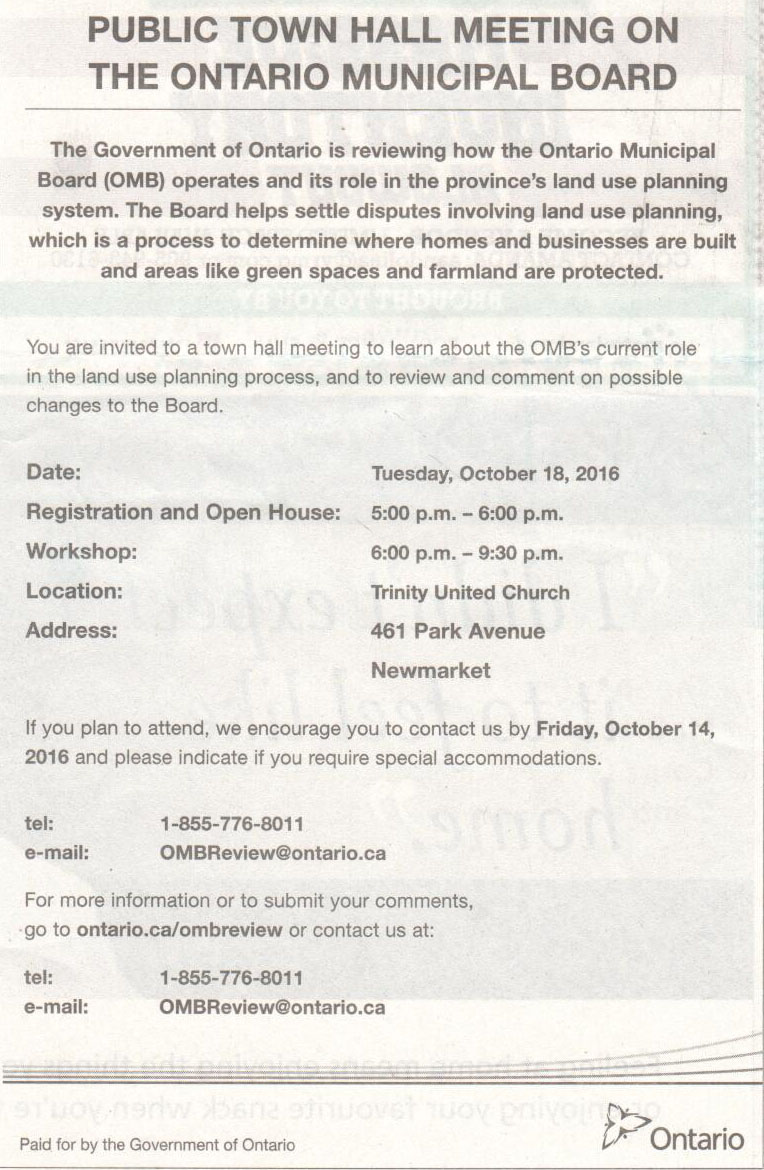
This is a great opportunity to help shape Provincial policy on the future of an appeals body that is never far from controversy.
The Minister of Municipal Affairs, Bill Mauro, says the Government will not be scrapping the OMB but
“We are going to try as best we’re able, through the proposed changes that we’re putting forward, to show more deference for local municipal decision-making.”
You can read the consultation report here.
Who should go?
1. The Mayor, Tony Van Bynen, who, before the last municipal election in 2014, promised Newmarket voters:
“Bringing reform to the Ontario Municipal Board and the Planning Act to ensure our residents have a say in shaping their community will be a priority in the next term. Our Council’s decision to fight for Glenway and defend our Town’s official plan was the right thing to do. I will be working with the Association of Municipalities of Ontario and a number of mayors to meet with the Province to bring about real change to the municipal planning process.”
2. Councillors (if possible - after the Committee of the Whole 7pm session ends) and wannabe councillors.
3. People living in Glenway who were burned by the OMB’s decision and whose neighbourhood is now being utterly transformed.
4. The Town’s Director of Planning, Rick Nethery, who, with his staff, boycotted the Glenway OMB Hearing
5. People concerned about the proposed 7 storey Clock Tower development and the developer’s appeal to the OMB.
6. Anyone else who believes local democracy and good planning are being subverted by the OMB.
More to come on this.
This email address is being protected from spambots. You need JavaScript enabled to view it.
Page 193 of 287